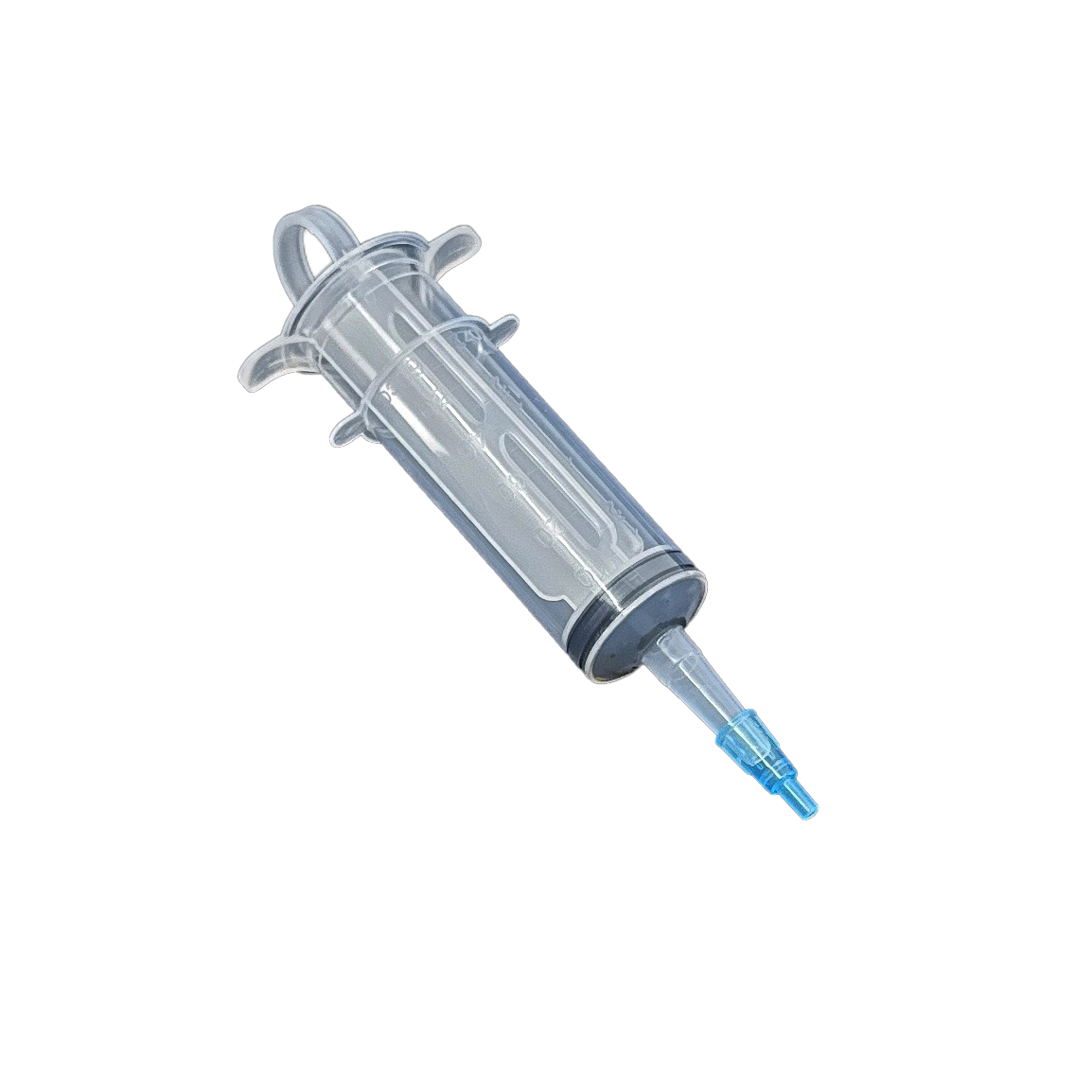Essential for Wound Cleaning
An irrigation syringe is a critical tool in any first aid kit, designed to effectively clean wounds by flushing out debris, bacteria, and other contaminants. Proper wound irrigation is vital to prevent infections and promote healing. Our irrigation syringe comes with an 18-gauge tip that helps provide the correct pressure needed for thorough wound cleaning.
How to Use an Irrigation Syringe
Using an irrigation syringe is straightforward but important for proper wound care:
-
Fill the Syringe: Draw clean water or a sterile saline solution into the syringe. Our 60cc syringe provides a sufficient volume for effective irrigation, ensuring you have enough liquid to thoroughly clean the wound.
-
Attach the 18-Gauge Tip: Attach the included 18-gauge tip to the syringe. This tip is specifically designed to deliver the right amount of pressure needed to clean the wound effectively without causing additional damage.
-
Irrigate the Wound: Hold the syringe a few inches away from the wound and gently push the plunger to release a steady stream of liquid. Aim the stream directly at the wound to flush out any dirt, debris, or bacteria. Repeat as necessary until the wound is clean.
Benefits of a 60cc Syringe
Our first aid kit includes a 60cc irrigation syringe, which offers several advantages over smaller syringes commonly found in competitor kits:
-
Sufficient Volume: A 60cc syringe holds enough liquid to perform thorough wound irrigation without the need for frequent refilling. This makes the process more efficient and ensures the wound is cleaned properly.
-
Effective Pressure: The larger volume allows for consistent pressure, which is crucial for effective wound cleaning. Smaller syringes, like 10cc or 20cc, often require multiple refills and can result in inconsistent pressure, making them less effective.
Storing Tools in the Syringe
The irrigation syringe is not only useful for wound cleaning but also serves as a convenient storage container for other small first aid tools. Here’s how you can safely store a short toothbrush and small tweezers in the syringe:
-
Prepare the Syringe: Ensure the syringe is clean and dry before using it for storage.
-
Insert the Tools: Place the short toothbrush and small tweezers inside the barrel of the syringe. These tools fit comfortably inside and are protected from damage and loss.
-
Secure with the Plunger: Partially insert the plunger into the barrel to hold the tools in place. This keeps them secure and prevents them from moving around or falling out.
-
Seal the Syringe: Fully insert the plunger when you need to seal the syringe, keeping the tools clean and protected until they are needed.
Advantages of Using an Irrigation Syringe
-
Efficient Cleaning: The 60cc syringe with the 18-gauge tip ensures effective wound irrigation, providing the right pressure to clean wounds thoroughly and reduce the risk of infection.
-
Versatility: The syringe can be used for various wound sizes and types, making it a versatile tool in any first aid kit.
-
Tool Storage: Storing a toothbrush and tweezers inside the syringe keeps these essential tools safe, clean, and readily available when needed.
Disadvantages of Smaller Syringes
-
Frequent Refills: Smaller syringes, like 10cc or 20cc, require frequent refills during wound irrigation, which can be time-consuming and less efficient.
-
Inconsistent Pressure: Smaller syringes may not provide the consistent pressure needed for effective wound cleaning, potentially leaving debris or bacteria behind.
Having a 60cc irrigation syringe in your first aid kit ensures you are prepared to handle wound cleaning effectively and efficiently. Its larger volume, proper pressure, and convenient tool storage make it an essential component for comprehensive wound care.
